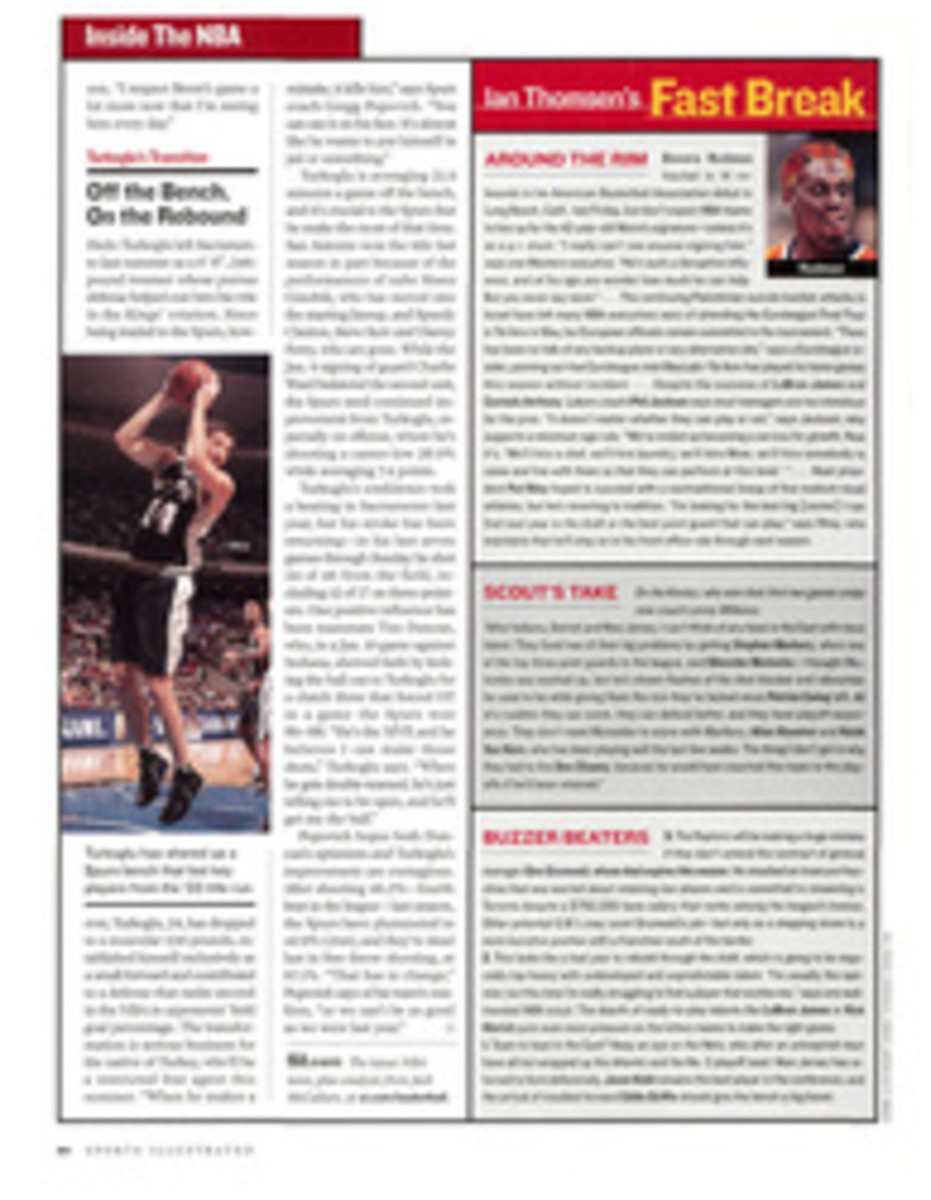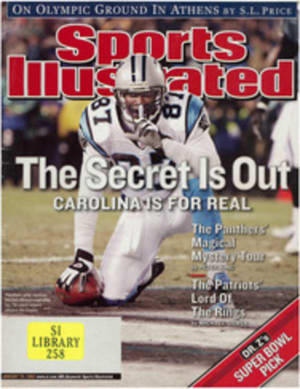
The Girl Has Game Even as she missed the cut at last week's Sony Open, Michelle Wie showed she belongs where the boys are
That tropical depression hanging over Hawaii last week had
nothing to do with the weather. It was the accumulated blues of
the nation's male chauvinists, who watched in awe and dumb terror
as a 14-year-old schoolgirl, Michelle Wie, shot rounds of 72 and
68 and came within a stroke of making the 36-hole cut at the Sony
Open. Wie, the youngest golfer to play in a PGA Tour event, was a
little bummed herself. "Just one more shot, and I would have made
it," she said after finishing with birdies on two of the last
three holes. "It's killing me now."
For those who think females don't belong on the same playing
field with males, Wie's performance had to be unnerving.
Forty-seven manly men finished behind her at Waialae Country
Club, including 18 players who have won Tour events. She tied
with Jim Furyk, the current U.S. Open champion, and with Ben
Curtis, the British Open champ. Wie held her own in an area in
which men are almost always demonstrably superior, averaging 271
yards off the tee, better than a third of the men. "There are
sports that lend themselves to coed or open competition," says
Dawn Riley, president of the Women's Sports Foundation and a
former America's Cup sailor. "A tall, strong woman can compete
with men in golf."
Wie, a ninth-grader at Oahu's Punahou School, is already tall
(six feet) and strong. Her swing mechanics and tempo are
virtually identical to those of Tour star and Sony Open winner
Ernie Els. (Her nickname, the Big Wiesy, is a send-up of Els's,
the Big Easy.) The crisp click her club face makes at impact is
the same as that of, say, Vijay Singh. Players watching Wie hit
300-yard drives on the Waialae practice range rolled their eyes
and whistled.
The mood was very different last summer when Annika Sorenstam
accepted a sponsor's exemption to play in the Bank of America
Colonial. The Tour players gave the 33-year-old LPGA superstar
credit for spunk, and they admired her ability to hit fairways
and make pars under pressure. But few thought Sorenstam had
enough game to play on their tour. Her drives had no pop. Her
short game was unsophisticated. She didn't spin the ball enough
to get close to the hole on hard, fast greens.
Wie, in contrast, plays the power game. She can reach most par-5s
in two shots, and she spins the ball sufficiently to attack
well-protected pins. She is a more complete player, in fact, than
Tiger Woods was at 16 when he missed the cut by six strokes in
his first Tour event, the 1992 Los Angeles Open. Wie still needs
the kind of imagination and consistency in her short game that
you see on the PGA Tour. Yet given the years of growth ahead of
her, it seems inevitable that she'll wind up competing, on a
regular basis, with the best men. "She can play on this tour,"
says Els, who shot a practice round with Wie before the Sony. "If
she keeps working, doing the right things, there's no reason why
she shouldn't be out here."
Unlike Sorenstam, who said that playing with men was a one-time
effort, or Suzy Whaley, who, at 36, played in the Greater
Hartford Open last year, Wie is the first evidence of a new
breed: a female golfer growing up with male stars as an ultimate
(and realistic) benchmark. Wie has said she hopes someday to
split her time between the LPGA (on which she made six cuts last
year, once finishing in the top 10) and the men's circuit. Doing
that would cause some controversy among feminists--some of whom
want to remove all barriers to women athletes, and some of whom
want to protect and expand existing women's leagues--and it would
infuriate the not-in-my-sand-trap wing of the opposite sex. The
Tour, on the other hand, could only benefit, as advertisers and
networks throw money at the ultimate reality show: Wie versus
Woods--the Lady and the Tiger.
There are larger questions. One is whether Wie will inspire the
next generation of schoolgirl athletes to hang up their
basketball shoes and head for the links. If that happens--and if
women eventually make up more than their current 22% of an
estimated 26 million U.S. golfers--then the recreational golf
market might finally see the explosion of growth Tigermania
promised but hasn't quite delivered. That would please a lot of
people of all ages and both sexes.
--John Garrity
COLOR ILLUSTRATION: ILLUSTRATION BY STEVE BRODNER
"Bethel said he had lived on the golf course since the 1960s."
--A GOOD HOME SPOILED, PAGE 20

